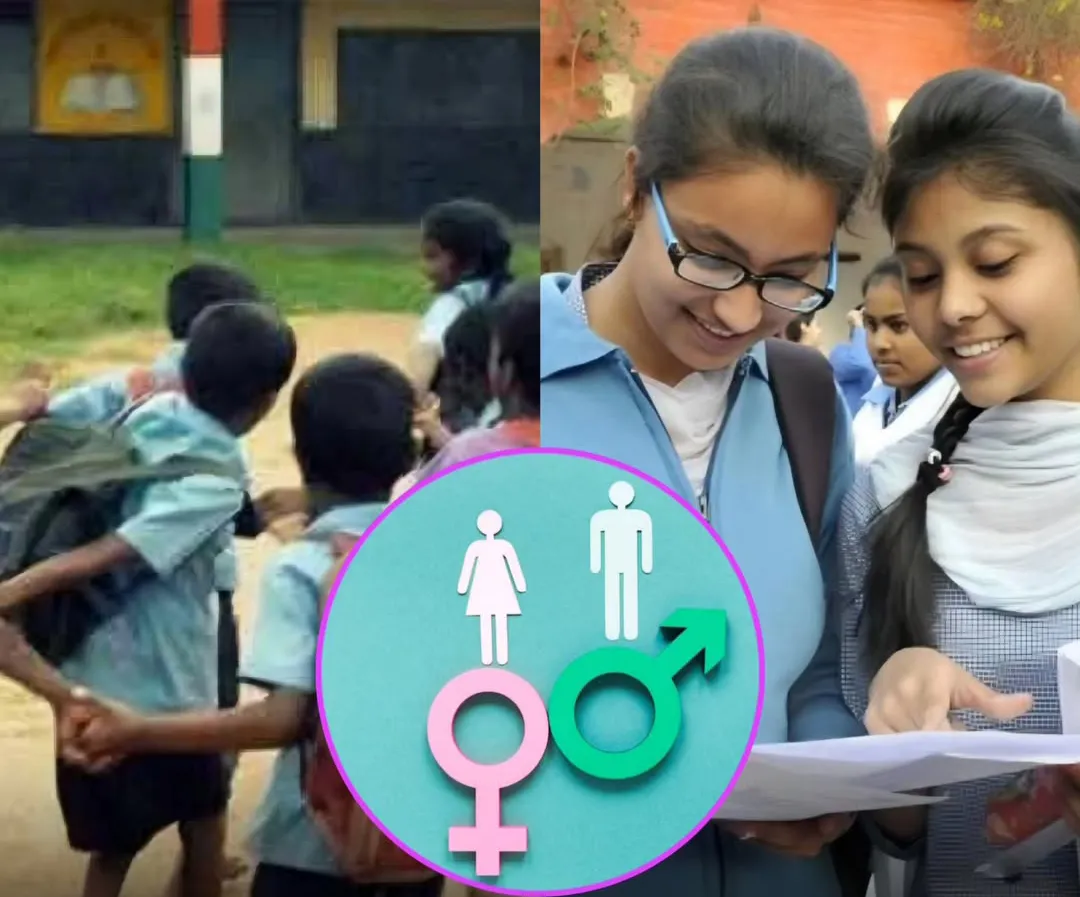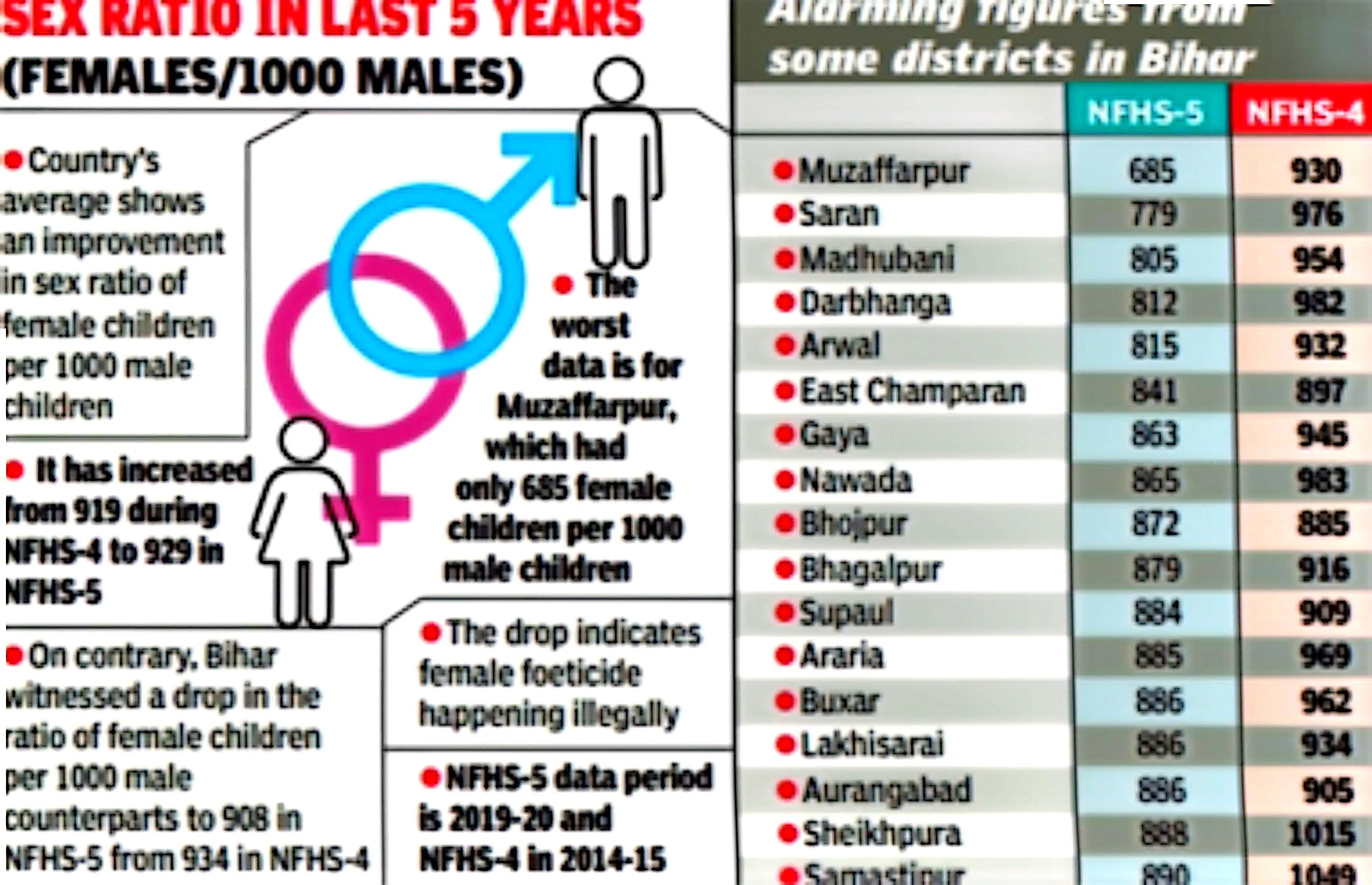the 2011 Census reported a total sex ratio of 918 females per 1,000 males, compared to the national average of 943. While the NFHS-5 (2019–21) recorded an improved overall sex ratio of 1,090 in Bihar, this apparent progress is misleading. the improvement is largely due to the large scale migration of working age males out of the state, which temporarily skews the population balance. At the same time, the child sex ratio has continued to decline dropping from 934 girls per 1,000 boys in NFHS-4 (2015–16) to 908 in NFHS-5, and reportedly falling further to 891 by 2025. Some districts, such as Muzaffarpur and Saran, have seen especially drastic drops, underscoring. According to TOI , Muzaffarpur showed an alarming figure of only 685 female children per 1,000 males in NFHS-5 compared to 930 in NFHS-4. Second worst was Saran with 779 female children in NFHS-5 compared to 976 in NFHS-4. Darbhanga, Madhubani, East Champaran and Samastipur also have a big drop in the sex ratio. Darbhanga figures dropped from 982 to 812, Madhubani from 954 to 805 while East Champaran and Samastipur witnessed a decline of -159 each. Interestingly, Haryana, infamous for female foeticide, showed an improvement from 836 to 893.

Cultural and Social Factors Driving Gender Bias Bihar's low sex ratio is largely the result of entrenched patriarchal values that place a higher social and economic premium on male children. In traditional households, sons are seen as future breadwinners, carriers of the family name, and providers for aging parents. Daughters, on the other hand, are often viewed as economic liabilities due to practices like dowry. These cultural attitudes foster a strong preference for male offspring, leading to sex selective behaviors such as gender based abortion and neglect of female children. Despite decades of social reforms, this mindset remains particularly persistent in rural and low literacy regions, making it a primary cause behind Bihar’s gender imbalance. Medical Technology and the Rise of Sex Selective Practices. The availability and misuse of medical technologies have contributed significantly to Bihar’s skewed sex ratio. Ultrasound machines, which became more accessible in the late 20th century, allowed families to determine the sex of a fetus and, in many cases, abort female fetuses. Although the Pre Conception and Pre Natal Diagnostic Techniques (PCPNDT) Act was introduced to curb this practice, enforcement has been weak in Bihar, with many illegal clinics continuing to operate under the radar. This technological misuse has shifted the gender imbalance from postnatal neglect to prenatal elimination, sharply reducing the number of girl children being born in several districts. Economic Disparities and Health Inequity. The economic landscape in Bihar exacerbates the problem by limiting access to education, healthcare, and nutrition, especially for girls. The state has one of the lowest female literacy rates in India, which correlates strongly with lower female empowerment and poor health outcomes. In many households, boys receive better nutrition and medical care, while girls are often neglected, increasing female infant and child mortality rates. Poor access to quality maternal healthcare further affects outcomes at birth, and the burden of poverty often intensifies son preference, as families see sons as better economic investments. Policy Response and the Road Ahead. To address this demographic crisis, Bihar needs a multi-pronged strategy focused on both enforcement and cultural change. While laws like the PCPNDT Act exist, their impact is limited without strict enforcement and regular monitoring. Government programs aimed at improving girl child education, healthcare, and nutritional status must be expanded, especially in rural districts. Public awareness campaigns that challenge harmful gender norms and promote the value of daughters are essential. Additionally, the state must invest in district-level data collection to identify hotspots and tailor interventions more effectively. Solving the problem of the skewed sex ratio requires not only legal and institutional reforms but also a fundamental shift in societal attitudes toward gender equality.
